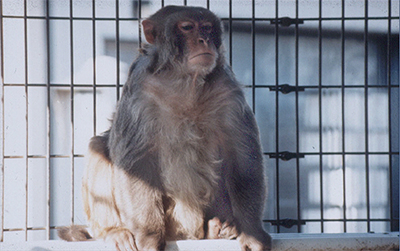ANGPTL3: A promising therapeutic direction for cardiovascular disease
Despite major advances in the treatment of cardiovascular disease, or CVD, with statins, antihypertensive and antithrombotic drugs, a residual number of patients with CVD remain untreated. These patients have a genetic disorder or extremely high levels of triglycerides (hypertriglyceridemia) that render them unresponsive to current therapies. To find new therapies, researchers are targeting circulating lipids and lipoproteins. A sedentary lifestyle and a diet high in sugar, fat and processed carbohydrates increase a person’s risk of developing CVD.

with a flavored 15% fructose solution and then treated with fish oil
supplements to demonstrate the role of diet on ANGPTL3 protein levels.
Two main sugars in the human diet are glucose and fructose. Glucose, the major component of dietary carbohydrates, is a product of starch. Fructose is found mainly in soft drinks and other beverages, desserts and candies. Although similar in calories, glucose and fructose are metabolized differently. Glucose is absorbed rapidly by almost all cells in the body, and its levels remain balanced through insulin release. Fructose is metabolized mainly by the liver, and its levels are not regulated by insulin; increased fructose consumption increases circulating triglycerides, low-density lipoprotein cholesterol, and fat around organs and blood vessels. In the process of de novo lipogenesis, fructose in the liver metabolizes to lipids.
The liver expresses and secretes angiopoietinlike 3, or ANGPTL3, which plays a role in lipid clearance; therefore, scientists see this protein as a promising therapeutic target for developing lipid-lowering drugs that target formation of triglycerides. In a recent paper in the Journal of Lipid Research, Peter Havel and colleagues wrote that consumption of dietary fructose increases circulating levels of ANGPTL3 in rhesus macaques by 30% to 40%. Increased ANGPTL3 correlated with increased levels of plasma triglycerides.
In collaboration with Arrowhead Pharmaceuticals, the authors found that inhibiting hepatic ANGPTL3 expression using RNA interference technology resulted in reduced circulating ANGPTL3 and triglycerides in rhesus macaques. Supplementing the macaques’ diet with fish oil led to decreased levels of ANGPTL3.
“These are the first studies to demonstrate the effect of diet (fructose and omega-3 fatty acids in fish oil) on ANGPTL3,” Havel said, “and suggest that ANGPTL3 is a promising target for management of hypertriglyceridemia.”
The role of dietary sugars in metabolism is a focus of Havel’s lab at the University of California, and the researchers have developed the rhesus macaque model of metabolic syndrome “in which consuming sugar-sweetened beverages accelerates the development of insulin resistance and dysregulation of lipid metabolism,” he said.
For patients with CVD who can’t benefit from current treatments, this research opens exciting possibilities for new therapies. “Suppression of ANGPTL3 production may be an important mechanism,” Havel said. “Fish oil supplements, when consumed in adequate amounts, lower plasma triglycerides and reduces CVD risk.”
Enjoy reading ASBMB Today?
Become a member to receive the print edition four times a year and the digital edition monthly.
Learn moreGet the latest from ASBMB Today
Enter your email address, and we’ll send you a weekly email with recent articles, interviews and more.
Latest in Science
Science highlights or most popular articles

Fueling healthier aging, connecting metabolism stress and time
Biochemist Melanie McReynolds investigates how metabolism and stress shape the aging process. Her research on NAD+, a molecule central to cellular energy, reveals how maintaining its balance could promote healthier, longer lives.

Mapping proteins, one side chain at a time
Roland Dunbrack Jr. will receive the ASBMB DeLano Award for Computational Biosciences at the ASBMB Annual Meeting, March 7–10, just outside of Washington, D.C.

Exploring the link between lipids and longevity
Meng Wang will present her work on metabolism and aging at the ASBMB Annual Meeting, March 7-10, just outside of Washington, D.C.

Defining a ‘crucial gatekeeper’ of lipid metabolism
George Carman receives the Herbert Tabor Research Award at the ASBMB Annual Meeting, March 7–10, just outside of Washington, D.C.

The science of staying strong
Muscles power every movement, but they also tell the story of aging itself. Scientists are uncovering how strength fades, why some species resist it and what lifestyle and molecular clues could help preserve muscle health for life.

Bacteriophage protein could make queso fresco safer
Researchers characterized the structure and function of PlyP100, a bacteriophage protein that shows promise as a food-safe antimicrobial for preventing Listeria monocytogenes growth in fresh cheeses.

